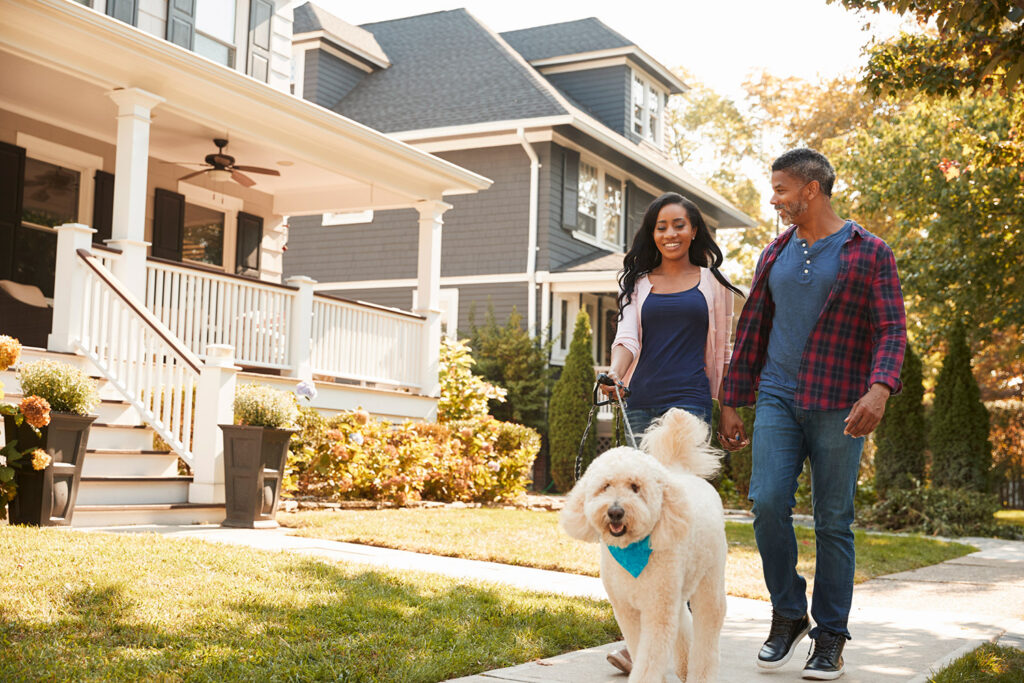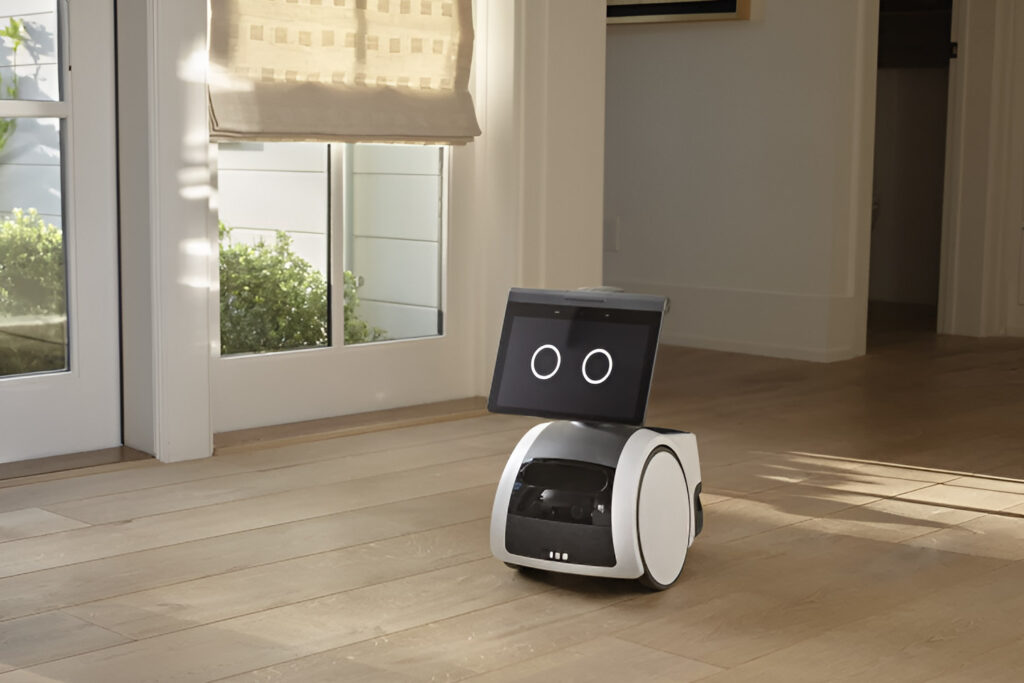In this post:
- What Is a Home Security System?
- What Does "Home Security" Mean?
- 15 Components of a Home Security System
- 1. Control Panel
- 2. Key Fob, Remote, or Keypad
- 3. Door Sensors
- 4. Window Sensors
- 5. Motion Sensors
- 6. Environmental Sensors
- 7. Glass Break Sensors
- 8. Automated Lights
- 9. Outdoor Motion Lighting
- 10. Indoor and Outdoor Surveillance Cameras
- 11. Video Doorbells
- 12. Monitoring Service or App
- 13. Yard or Window Sign
- 14. Alarm Siren
- 15. Panic Button
- DIY vs Professional Home Security
- The Importance of Home Security Systems and Monitoring for Homeowners
What Is a Home Security System?
Home security systems do so much more for your home than detect criminal activity, although that is a primary feature of smart home security. The best home security system offers whole-home protection with video surveillance, smart locks, motion detection, carbon monoxide sensors, and other home automation components to make your home safer. Understanding how the components of home security systems work together can help you feel more comfortable with and confident in your security system.
Get A FREE Home Security Quote Now
15 Components of a Home Security System
- Control Panel
- Key Fob, Remote, or Keypad
- Door Sensors
- Window Sensors
- Motion Sensors
- Environmental Sensors
- Glass Break Sensors
- Automated Lights
- Outdoor Motion Lighting
- Indoor and Outdoor Surveillance Cameras
- Video Doorbells
- Monitoring Service or App
- Yard or Window Sign
- Alarm Siren
- Panic Button
Various home security companies offer homeowners different home security and smart home features and services. For instance, ADT security systems can be installed by a professional from the company, while Brinks Home Security provides easy-to-install products that homeowners can self-install.
Regardless of the home security company you use, your system will include several components, like a security camera, motion detector, alarm system, and other devices and features that add security and safety to your home. It's important to understand the role of each part of a security system so that you can decide on the features you need and set up your system for optimal security.
What Does “Home Security” Mean?
Home security includes both home security systems and safety practices that keep you and your family safe. As such, home security is much more than an outdoor or indoor camera, a motion sensor light, or a Scout alarm system. Instead, home security can include complex home security systems with professional monitoring and smart home connectivity combined with a dedication to safe practices understood by each household member.
Safe practices that become an important part of home security include:
- Each household member should check door locks when entering or leaving the house
- Enable the home alarm system before leaving and keeping it on when you're home
- Check the fire alarm and carbon monoxide detection systems at least once every six months
- Leave porch lights on in the evening and overnight
- Practice fire drills and emergency escape routes and plans
- Fireproof the kitchen
- Ensure that household members don't share your address with people they don't know well
- Protect valuable items in a safe
By participating in safety practices like these and investing in professional home security systems, you can protect your home and family and add peace of mind to your household.
15 Components of a Home Security System
The best home security system for one household may not be the best for another. That's why it's crucial to understand the different components available in home security systems. Doing so allows you to choose the services and equipment that fit your needs and gives you the level of security you need.
Learn more about each security system component, their role in your security system, and how they interact with other equipment to protect your home and family.
1. Control Panel
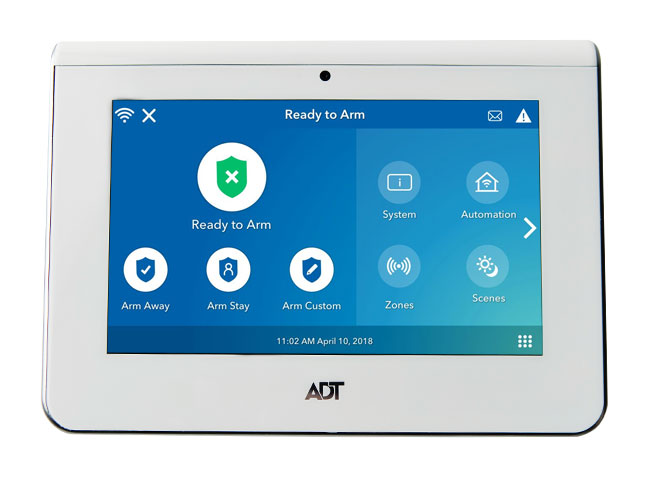
The control panel is the part that you'll probably use most. This panel is where you'll arm and disarm your alarm, change your home security settings, and control devices if you have smart devices connected to your system.
The control panel also sounds an alarm when sensors detect movement or break-ins. If you have subscribed to professional monitoring, your control panel can automatically notify emergency personnel when an alarm gets triggered. You can use the control panel to communicate with emergency personnel when this happens.
Depending on the size of your home and how your security system is set up, you may have more than one control panel for your system. For instance, some homeowners have them installed on each level of the home for easy access.
Control panels can look much different with various systems, too. Some are very simple, almost designed like a thermostat with a black-and-white screen. Others are more detailed with large touch screens that display detailed information about your home security system.
2. Key Fob, Remote, or Keypad
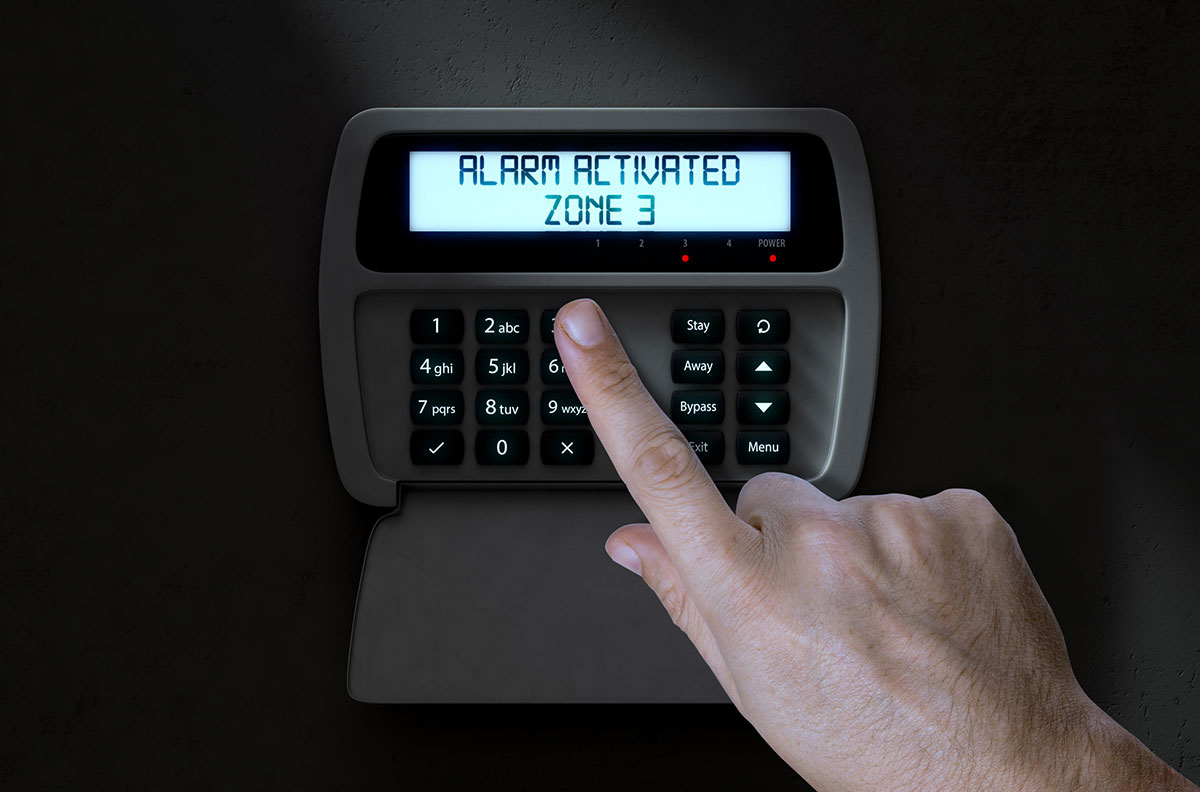
The keypad for a home security system is usually included on its control panel, but some home security systems may have a separate panel for this. The keypad is what you'll use to arm and disarm your alarm.
Some systems offer a key fob or remote to control the alarm system. They function similarly to a TV or vehicle remote, allowing homeowners to set or disarm the alarm without being right near their keypad or control panel. In some cases, they can be dozens of feet away and still arm or disarm the alarm. This can be convenient if you are already in your car and realize you haven't set your alarm yet.
Some remotes also include an emergency button that contacts emergency personnel quickly.
3. Door Sensors
Door sensors alert you when someone enters your home unexpectedly. One part of the sensor attaches to the stationary frame of the door while the other part attaches to the door. When they move away from each other, it triggers the alarm system.
More complex home security systems will typically have these sensors wired into the control panel so that the alarm can sound when a door opens and the alarm is activated. Simpler versions also exist. They run on battery power and connect wirelessly to a keypad that you use to arm and disarm your alarm system.
Door sensors can be helpful for any entry doors, especially those that are out of sight from the main parts of the house, like a garage door or back door. However, some homeowners have them installed on all doors, including bedroom or hallway doors, for maximum security.
4. Window Sensors
Like a door sensor, a window sensor can alert you if an intruder opens a window. They work similarly, triggering the alarm system when the parts of the sensors move away from one another or detect motion. When the sensor triggers, it can send an alert to your control panel and, in turn, call emergency services if you have professional monitoring through a security company.
Most homeowners install window sensors on the ground and basement levels of their homes, as these are the easiest for intruders to access. However, you can install a window sensor on any window of your home.
5. Motion Sensors
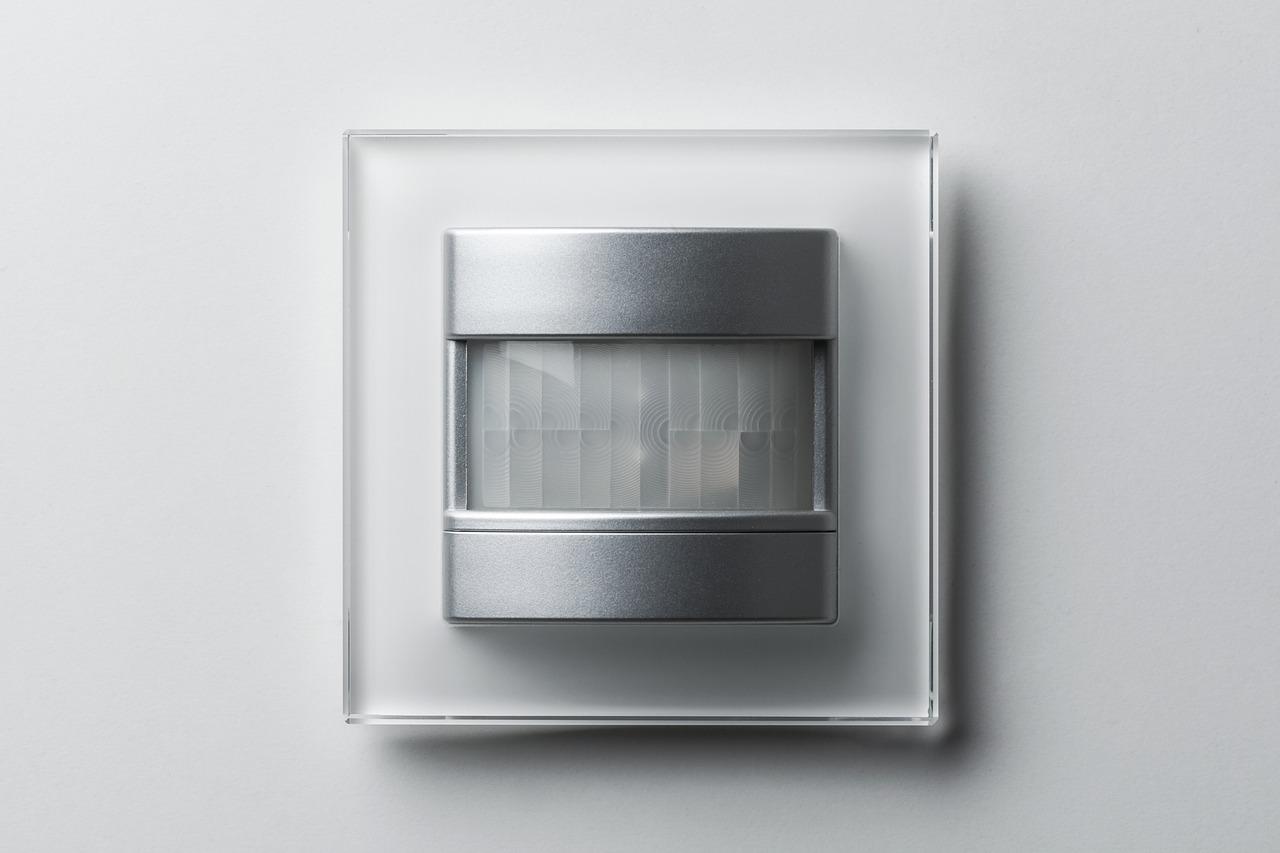
Motion sensors are similar to door and window sensors. However, rather than detect when a door or window opens, they can trigger an alarm when they detect motion in or around your home. Most motion sensors work by detecting body heat, which can help them weed out the movements of pets or outside animals.
Homeowners who want maximum security may have motion sensors installed on each floor of their home, especially in hallways, entryways, staircases, and outside of their homes. It's common to install motion sensors that trigger lights to turn on outside by garage doors, porches, sheds, and other outdoor areas that remain dark at night and provide easier access for intruders.
With professional monitoring, a motion sensor can alert your security company when it detects motion and has the company contact emergency services to assist you.
6. Environmental Sensors
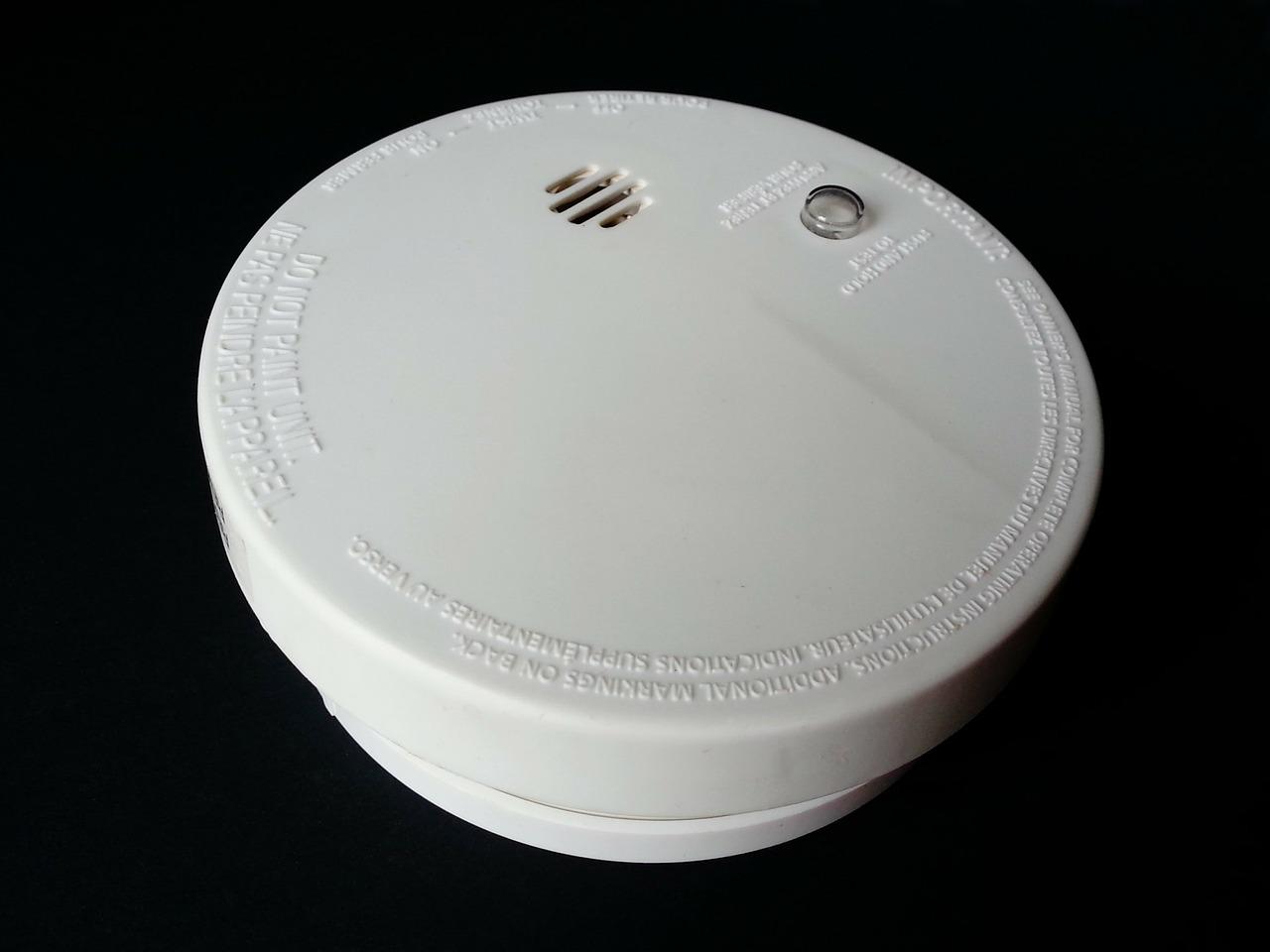
Home security targets more than just intruders. Whole-home security systems can also include smoke detector sensors and carbon monoxide detection to keep your household safe in the event of a fire or carbon monoxide leak. Some systems have all-in-one smoke and carbon monoxide detectors, requiring you to have fewer of these devices installed.
Your home security system may also include water sensors that can keep you aware of pipe freezes, pipe leaks or breaks, and flooding in your home. A professional home security company usually installs these in areas prone to flooding in your home, like a crawlspace or basement. The sensors get installed close to the floor and work by triggering an alert when prongs on the bottom of the sensors detect water.
7. Glass Break Sensors
Intruders who want to get into a home quicker than doing so by trying to open a window might break a window instead. A glass break sensor can be another way to protect your home and family in the case of a home invasion. These sensors pick up the sound of glass breaking rather than motion. Usually, they can pick up the noise within several feet of where it happens, so homeowners do not usually need to install them on every window of the home.
It's also a good idea to install a glass break sensor on sliding glass doors leading out to a backyard area as an additional form of protection with door sensors. Doing so gives a backup method of detection, just in case a stealthy intruder attempts to skirt a door sensor's alarm.
8. Automated Lights
A somewhat newer feature included in many home security systems is the automated light, sometimes referred to as a presence simulator. These lights are installed inside the home and connect to the security system's control panel. The security system randomly turns lights inside the home on and off without a specific schedule. In doing so, it appears that someone is inside the home, which could deter home invaders from entering.
Usually, homeowners can set a scheduled timeframe for the feature to kick on, including times and dates. This allows them to turn it on when they're on vacation, for example, or set the feature to run when they're typically at work.
Some smart home systems and security systems also let you control automated lights when you're away from home by using the connected mobile app and choosing which lights to switch on or off.
9. Outdoor Motion Lighting

While automated lighting happens indoors, motion lights get installed outdoors to offer a blanket of security in dark areas. Security companies connect them to motion sensors, with the sensor catching the movement and triggering the lights to turn on. It's common to install outdoor motion lighting in porch areas, near back doors, and by detached structures, like a shed or garage.
When connected to motion sensors that create alerts for your home security system, a motion detection light can do the same, signaling to your professional monitoring center that someone is in the area.
Modern outdoor motion lighting is relatively sophisticated, allowing it to bypass the detection of animals and, instead, focus only on people who are outside the home.
A professional installation of a home security system can ensure that motion lights won't interfere with outdoor camera monitoring by considering their placements near each other.
10. Indoor and Outdoor Surveillance Cameras
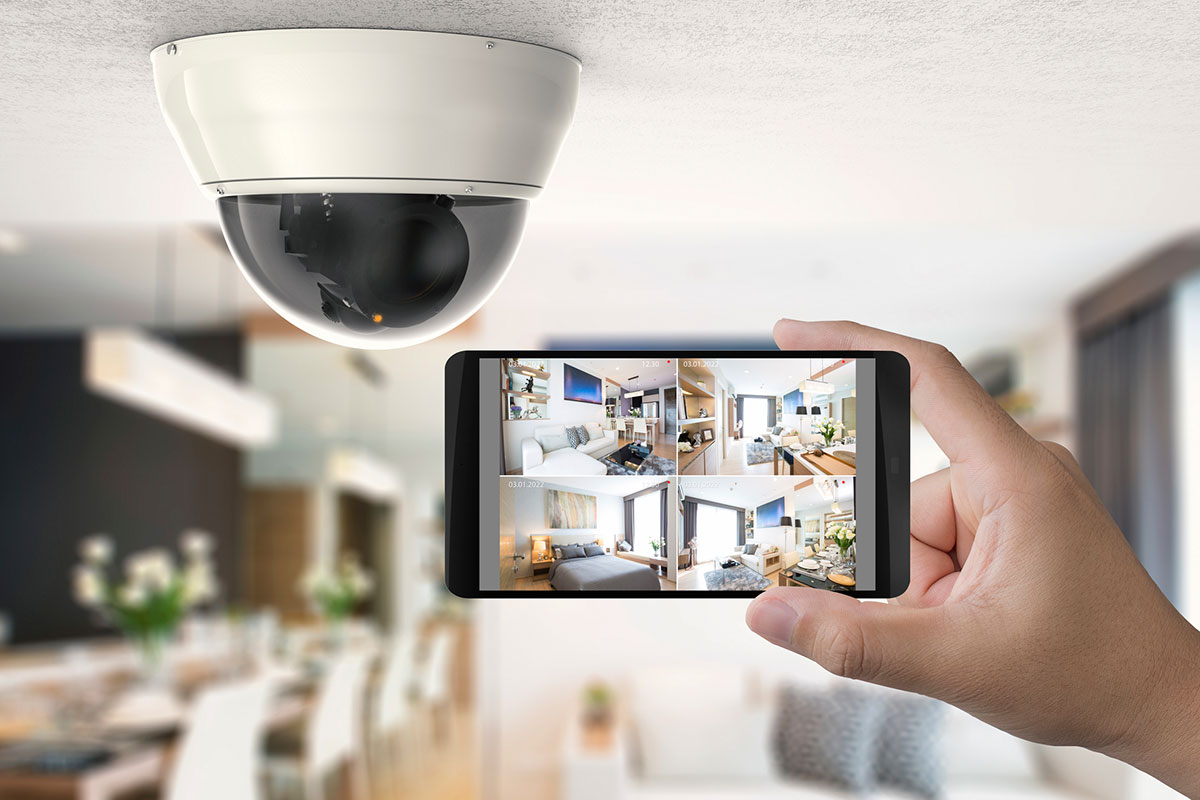
For cameras, be sure to discuss wired and wireless options, analog vs. digital, IP network cameras, doorbell cameras, etc.
Home security cameras are essential to a reliable home security system. Homeowners can install them inside and outside of the home for all-around monitoring. Today's camera systems usually connect to a mobile app so that homeowners can view their cameras even when they're not home.
There is a wide range of camera types to choose from, including:
- Wired: Wired security cameras get hardwired into your home, making them run off the power source for your home.
- Wireless: Wireless cameras send signals via your Wi-Fi. They are battery-powered and, therefore, easier to install than wired cameras. However, they conserve energy by recording only when they detect a signal, which may be less reliable than a wired setup.
- Analog: An analog camera records video footage and sends that footage through a cable and DVR box. The DVR box can store the footage on its hard drive.
- Digital: Digital cameras record footage and automatically upload the footage to the cloud, skirting the need for a DVR box or hard drive. Although this setup typically comes with a higher initial cost and possible monthly charge for storage than an analog camera, it usually yields better image quality and a simpler setup.
- IP: IP cameras are also known as network cameras. They connect via Wi-Fi or ethernet and can have either built-in or cloud storage.
- Doorbell: A doorbell camera looks and functions like a doorbell with the addition of a camera that lets you see who's at the door via a connected mobile app. They need to connect to your doorbell wiring and wireless network.
11. Video Doorbells
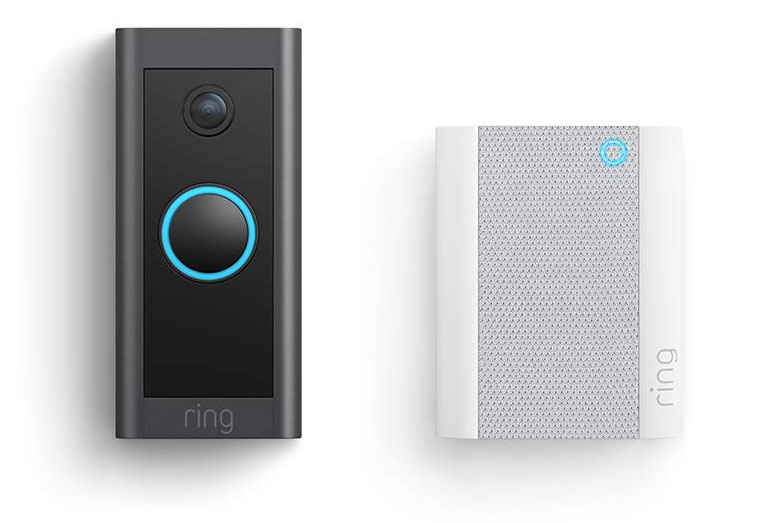
A video doorbell combines a camera's security with a doorbell's convenience. The doorbell camera shows who is at the door via a mobile app or smart hub like the Amazon Echo Show. Many of them also allow homeowners to communicate through a speaker with the visitor and can record footage for later review.
Install a doorbell camera wirelessly using battery power or hardwired into the home's power system to operate with your current doorbell chime. Wireless video doorbells can sometimes connect to a wireless chime to function as a regular doorbell. Otherwise, it will send an alert to the connected mobile app to let you know when someone rings it.
12. Monitoring Service or App
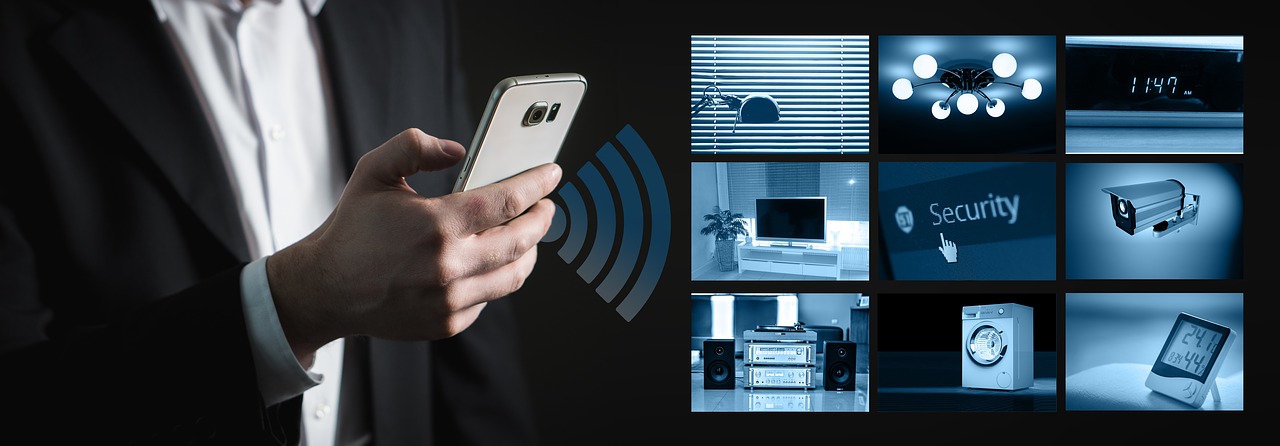
Depending on the type of home security system you choose, you can subscribe to a monitoring service or do your own monitoring with an app or recording software.
With professional monitoring, your home security system alerts a monitoring company when something is wrong, such as a glass break sensor detecting a break-in. The company can then alert emergency services for assistance after first attempting to contact homeowners.
Some homeowners opt for DIY monitoring instead. With this type of system, you can store camera recordings via a digital video recorder (DVR), network video recorder (NVR), SD card, or cloud storage and view your cameras and alerts through a connected mobile app.
Several brands, like Amazon Alexa and Google Home, have created easy-to-install and affordable smart home security devices to protect your home. Ring Alarm Pro, Blink cameras, and Nest cameras are a few examples that also mesh with your smart home integration. In addition, various subscriptions are available for these devices to give you the level of security you prefer.
13. Yard or Window Sign
Many security services give homeowners yard or window signs to place around their homes to let others know that they have a security system installed. While these signs don't have an active role in securing the home, they can be an extra layer of protection to deter home intruders.
14. Alarm Siren
An alarm siren for your home is similar to an alarm alert on your car. If an intruder comes into your home and triggers your alarm system, your system can then cause your siren to turn on to alert neighbors that something is wrong.
Alarm sirens come in varying volumes, with louder ones being helpful in areas where neighbors are farther apart from one another.
15. Panic Button
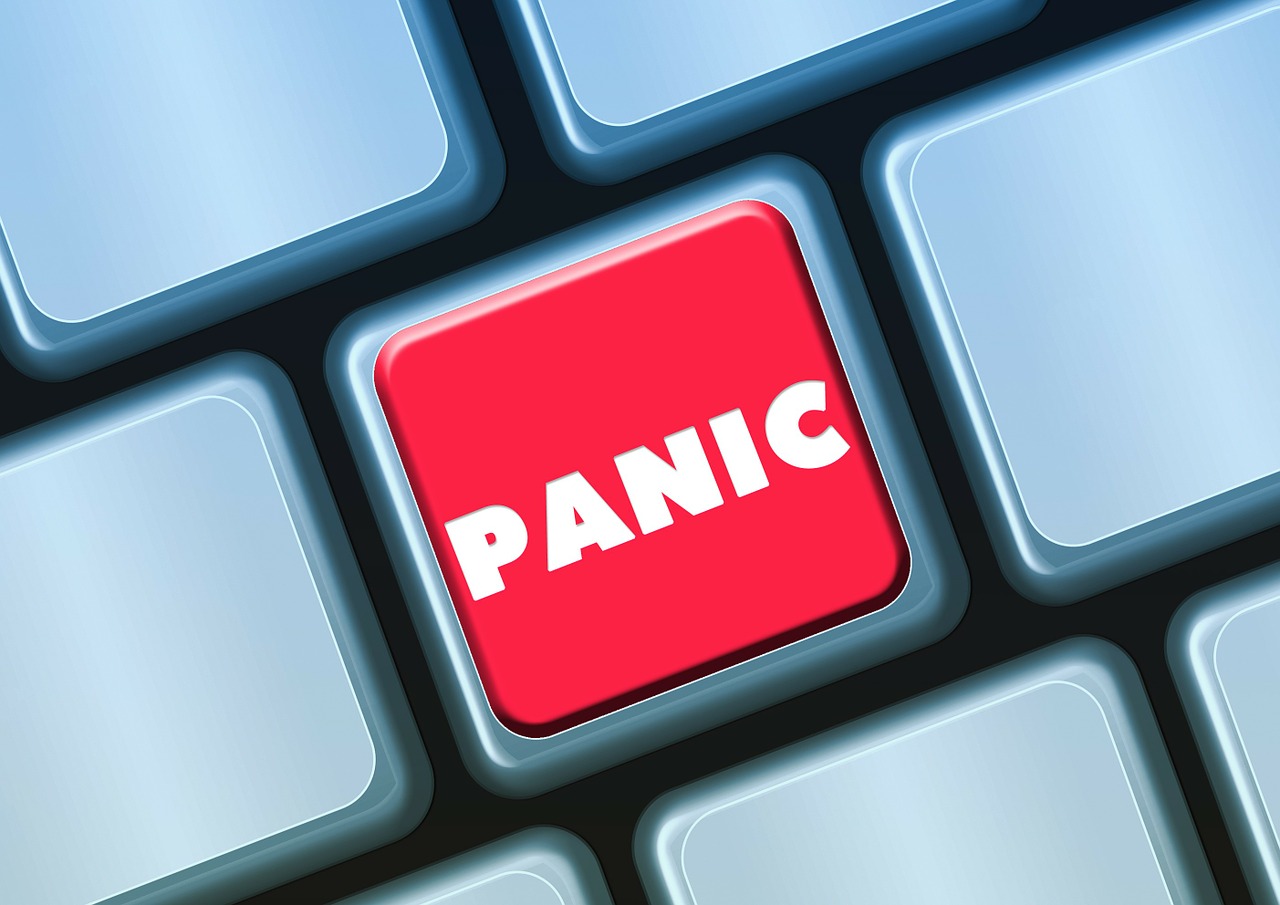
Home security systems that connect to a mobile app or key fob usually come with a panic button. Homeowners can press a panic button to sound a loud siren instantly. Panic buttons are usually reserved for when a homeowner senses danger, instantly sounding an alarm to alert others and possibly deter a break-in.
DIY vs Professional Home Security
Are you considering installing your home security system yourself? A DIY system certainly includes some benefits, like saving money while accessing many of the same features as you would from a professionally installed security service.
However, opting for a professional installation can save you time and ensure that every component has the correct setup. Explore some of the key differences between a professional and DIY system to determine your best route.
DIY Home Security System: Pros and Cons
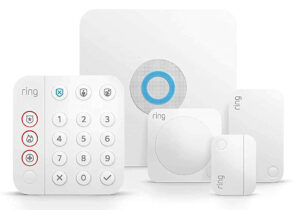
The primary reason homeowners choose to install a DIY home security system is to save money. Professional installation can be costlier than installing your system yourself.
Additionally, homeowners with small homes and minimal home security needs might simply find it easier to self-install if their setup isn't too complicated. Unfortunately, a DIY system, if installed incorrectly, may not function as expected, which could leave your home vulnerable to safety and security issues.
Additionally, if you damage any equipment while setting it up, you could void the equipment's manufacturer warranty. In contrast, any mistakes that happen during professional installations will keep your warranty intact.
A DIY home security system may also require you to use separate mobile apps for different devices or hold multiple subscriptions to control each component, like a Ring alarm or smart home device.
Smart Security with Professional Installation: Pros and Cons
Many security company options offer professional installation to ensure that your system has the right setup for your needs. For instance, a Vivint smart home system and ADT security services feature professional installations that include detailed walk-throughs to learn how to use your new system.
Security companies provide installation services because they know that complicated systems can be challenging to install. Many components need to be hard-wired into your home, which can be tricky for homeowners who aren't skilled in electric work.
Professional installations also connect everything to one central control panel so that you can control all your devices in one spot.
Of course, a professional security installation costs more than a DIY system installation. However, you'll get peace of mind knowing that everything has been installed properly and that you've received the correct training to understand and work your home security system.
The Importance of Home Security Systems and Monitoring for Homeowners
Home security is essential for homeowners, whether they live alone or with others. The best home security system for one home might look different for another. Fortunately, there is such a wide variety of professional home security systems and DIY devices available that your options are virtually endless regarding finding the right solution.
Spend some time researching whether professional or DIY devices are your best option and what type of equipment you'd like to include in your system. Compare equipment and services from different brands, as each one offers something a little different in terms of features and pricing. Consider having a professional installation to ensure that each piece of equipment gets installed properly so everything works as intended.





